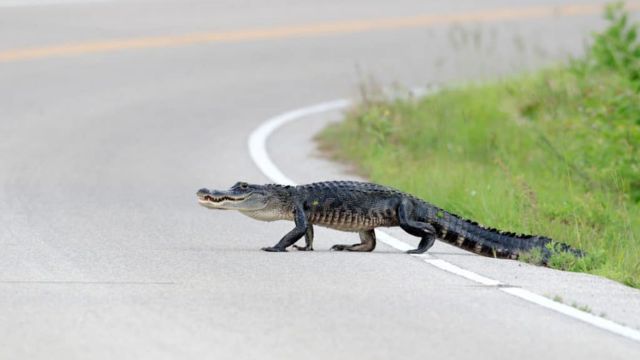Florida is renowned for its sunny skies, pristine beaches, and bustling theme parks, drawing millions of visitors each year. However, lurking beneath this paradise is a hidden danger— a host of deadly animals that roam its landscapes and waters. This guide delves into the deadliest creatures in Florida, equipping visitors and residents with the knowledge to navigate these hazards safely.
Bull Sharks
The bull shark, known for its broad, robust body and aggressive nature, is a frequent visitor to Florida’s shallow coastal waters. This shark’s ability to thrive in both salt and freshwater makes it particularly dangerous. Known for their unpredictability, bull sharks are implicated in many unprovoked attacks on humans, highlighting the need for vigilance near the water.
Cottonmouth Snakes
The semi-aquatic cottonmouth, or water moccasin, can be found in Florida’s marshes, swamps, and lakes. Recognizable by its distinctive white-lined mouth, the cottonmouth’s venomous bite requires immediate medical attention to avoid serious consequences, including potential death if bitten while in the water.
Florida Panthers
The endangered Florida panther, a subspecies of the mountain lion, roams the southern Florida wilderness. These solitary predators are formidable with their powerful build and sharp claws, posing a significant threat if encountered, particularly at night.
Burmese Pythons
An invasive species wreaking havoc in the Everglades, the Burmese python is one of the largest snakes globally. Though not venomous, their strength is enough to overpower fully grown humans, making them a lethal presence in Florida’s wilds.
Pygmy Rattlesnakes
Found throughout Florida, the pygmy rattlesnake, though small, delivers a potent venomous bite. This snake’s diminutive size does not diminish its danger, particularly to children and pets, due to its faster-acting venom.
Florida Black Bears
The Florida black bear, the state’s largest land mammal, can be encountered in the forests and occasionally in residential areas. While generally shy, they can become aggressive if threatened or when in search of food.
American Alligators
Ubiquitous in Florida’s freshwater environments, the American alligator is a formidable predator with a powerful bite. Alligators generally avoid humans but can display aggressive behavior if provoked or defending their territory.
Brown Recluse Spiders
The venom of the brown recluse spider can cause severe skin necrosis, making it one of Florida’s most dangerous arachnids. They tend to hide in dark, undisturbed areas, making accidental encounters a real risk.
Southern Black Widow
The iconic southern black widow is easily recognized by the red hourglass on its abdomen. Known for its neurotoxic venom, which can cause severe pain and systemic reactions, the black widow is a spider to be wary of in dark, undisturbed spaces.
Boxed Jellyfish
Often found in Florida’s coastal waters, the boxed jellyfish is known for its potent venom, which can cause excruciating pain and, in severe cases, death. Swimmers should be cautious during jellyfish season to avoid painful, potentially lethal, stings.
Eastern Diamondback Rattlesnake
The largest rattlesnake species, the Eastern diamondback, is highly venomous and can be found throughout Florida. It prefers dry, upland areas and is quick to strike when threatened, making it a particularly dangerous snake.
Fire Ants
Red imported fire ants are notorious for their aggressive behavior and painful stings that can lead to allergic reactions. Common in Florida, these ants build large mounds and can attack en masse if disturbed.
Kissing Bugs
The kissing bug is a blood-sucking insect that can transmit Chagas disease, a serious and potentially life-threatening condition. These nocturnal insects often bite humans around the face and lips while they sleep, transmitting the disease through their feces.
Conclusion
Florida’s diverse ecosystem is home to some of the most fascinating yet deadly creatures in the United States. By understanding the risks associated with these animals and taking precautions, residents and visitors can enjoy the beauty of Florida more safely. Always maintain awareness of your surroundings, especially in natural areas, and seek immediate medical attention if you encounter any of these dangerous animals.

